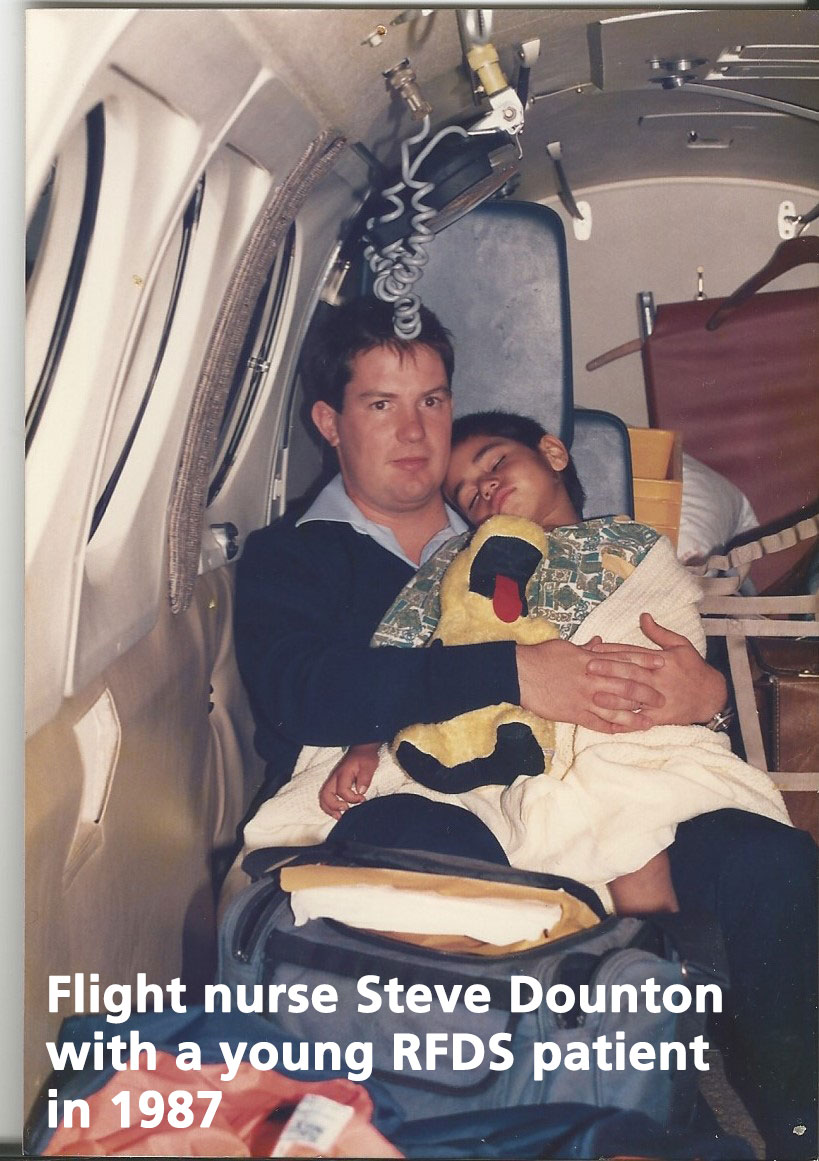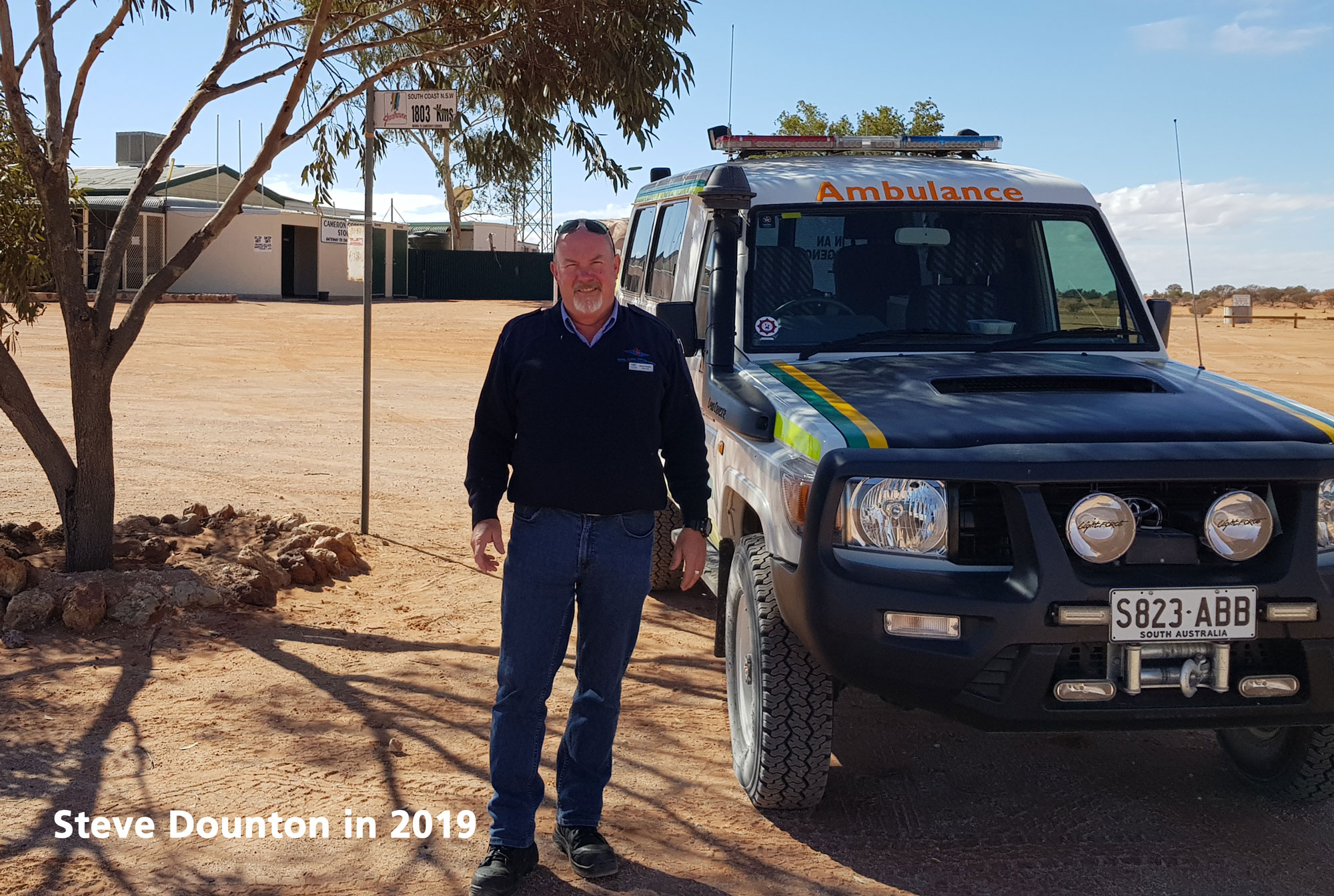28 October 2020
Article from October 2020 edition of INPractice
Remote area nurse Steven Dounton recalls his first night flight with the Royal Flying Doctor Service ... The plane decapitated a Big Red!
"My first ever night flight in Broken Hill.
It was going to Tibooburra (a town in far northwest NSW). We hit a kangaroo on landing: Steve says.
"Back in those days it was like brush yourself off and have them send another plane out to pick me and the patient up and bring the patient back.

"It knocked the nose wheel out. We were still airborne, it was a really big red (kangaroo) and we knocked the head off of it.
"It was night time on a dirt strip so we landed and then the front just went down on the runway and the engines were hitting the ground ... wiped out all the underneath of the nose.
"It was pre-satellite phone and all of that, so we had to go into Tibooburra hospital and ring from there and tell them 'Yeah, we mangled the plane'."
Currently a remote area nurse at lnnamincka, a tiny town (population 44) in north-eastern Outback South Australia, Steven graduated as a Registered Nurse at Port Pirie in 1981, then worked in the ICU at the Repat.
He did his "mid" (midwifery course) at the old Queen Vic in 1984 before applying for and getting a gig with the RFDS in 1986, tending to the health care needs of isolated communities within SA's Cooper Basin region.
"You had to have midwifery and you had to have ICU experience, that's what they liked. Accident and emergency," he says of the RFDS.
"Back in those days you used to fly in an unpressurised aircraft and really slow, noisy ones. Like the old Nomads, a really slow aircraft that has to fly below 10,000ft and that's really known for its turbulent rides.
"Whereas nowadays they're all pressurised and they fly quite high and they're above most of the weather.
"Being on call 24 hours a day if you had to go to Moomba or somewhere from Broken Hill back to Adelaide to drop the patient off and then back to Broken Hill it could take up to 12 hours. It was such a slow aircraft and you were really knackered after that. About a 160-180 knots (296 to 333kph, top speed)."
At the time of the interview Steve was holed up at home in COVID quarantine in Tasmania, where he now resides. The avid surfer lives at the beachside town of Lewisham, north of Hobart.
Quarantine was mandatory after taking leave from nursing in the comparatively parched South Australian desert.
"We're all doing long shifts so that we don't expose the community to COVID-19 by coming in and out all the time, Steve says. ''I'm an essential worker when I come back to SA so I don't have to quarantine."
When he first started with the RFDS Steve was initially on 24-hour call for a week.
"Obviously things have changed where they do eight or 10 hour shifts now. Then you just never, really got it. You did night duty and then slept when you could. You had some quiet days and then you had some horrendous days," he says.

"Probably my worse day was back in Moomba. We used to go out in a helicopter at night and it was to pick people up and there was a ringer in lnnamincka that had been bitten by a mulga snake and he was showing signs of envenomation," Steve recalls.
"There were two of us up at Moomba, I was on second call so my friend and colleague went in the helicopter to pick him up and bring him back to Moomba.
I talked to the station and they'd heard the helicopter and then they hadn't heard it again. I kind of knew that it had crashed.
"There was no other way apart from driving up there and looking for it. Anyway the pilot and her walked into the station. They were injured. They'd crashed about 500m from the station.
"So then I had those two people and the envenomated ringer, so then we had to send the ambulance up from Moomba to pick them all up. That was a hell of night, didn't really stop.
"They were bruised. It was really lucky because most helicopter crashes don't turn out well. Because the fuel tanks are right above your head.
Despite countless years in the air, Steve admits he still gets the yips occasionally.
"Oh yeah, at night in crappy weather," he says.
"I remember one day when we went down to Bordertown, we were trying to get in and the pilot couldn't see the runway," Steve adds.
"I rang the hospital and said 'it looks like we're not going to get in' and they said 'Oh, we thought you wouldn't because we haven't sent the ambulance because the fog is so thick you can't drive on the road'.
"So nobody told us that and we'd been circling Bordertown and the fog is down to the ground and we thought it was just low cloud."
While the emerald isle of Tasmania is a world removed from the Outback, Steve says he loves working in arid SA.
"There's a lot (of characters), especially the station people. That's what you like about the job, I think. They've just got this real can-do attitude and they're used to isolation and pitching in when times get tough, he says.
"Working with the RFDS has been really interesting and full of challenges. I always feel quite proud when I am asked who I work for and reply 'the RFDS'."
Click here to read the full October 2020 edition of INPractice.